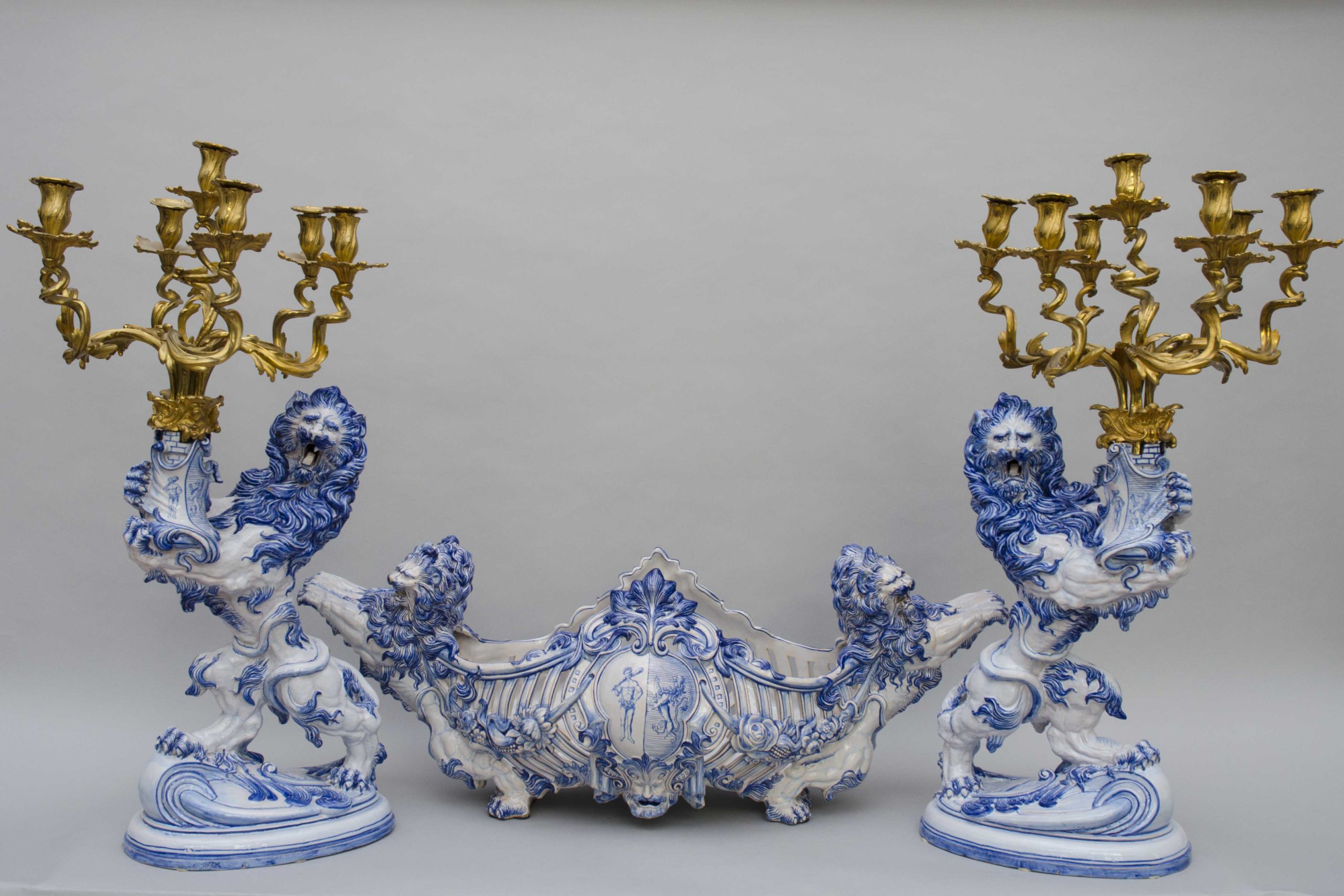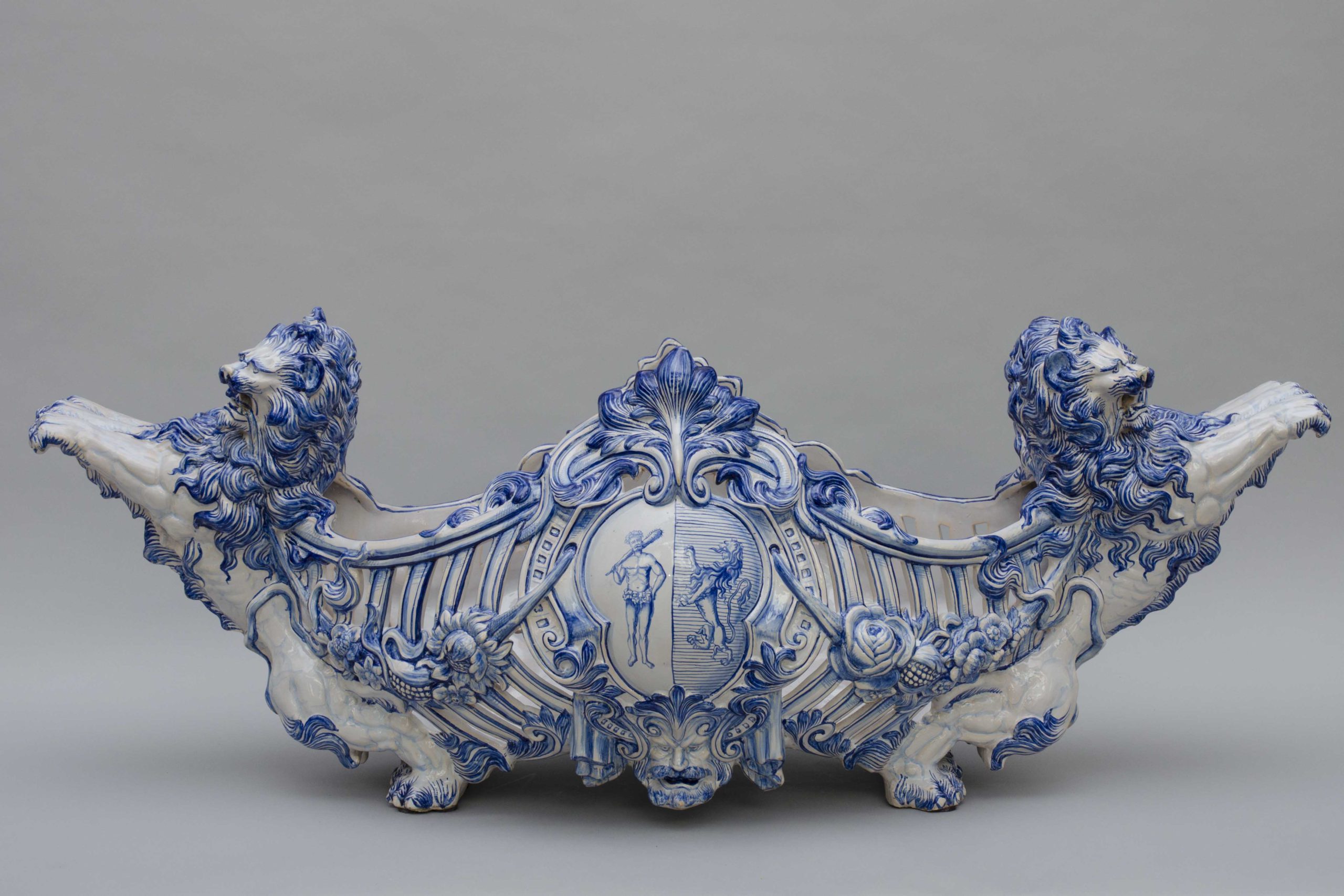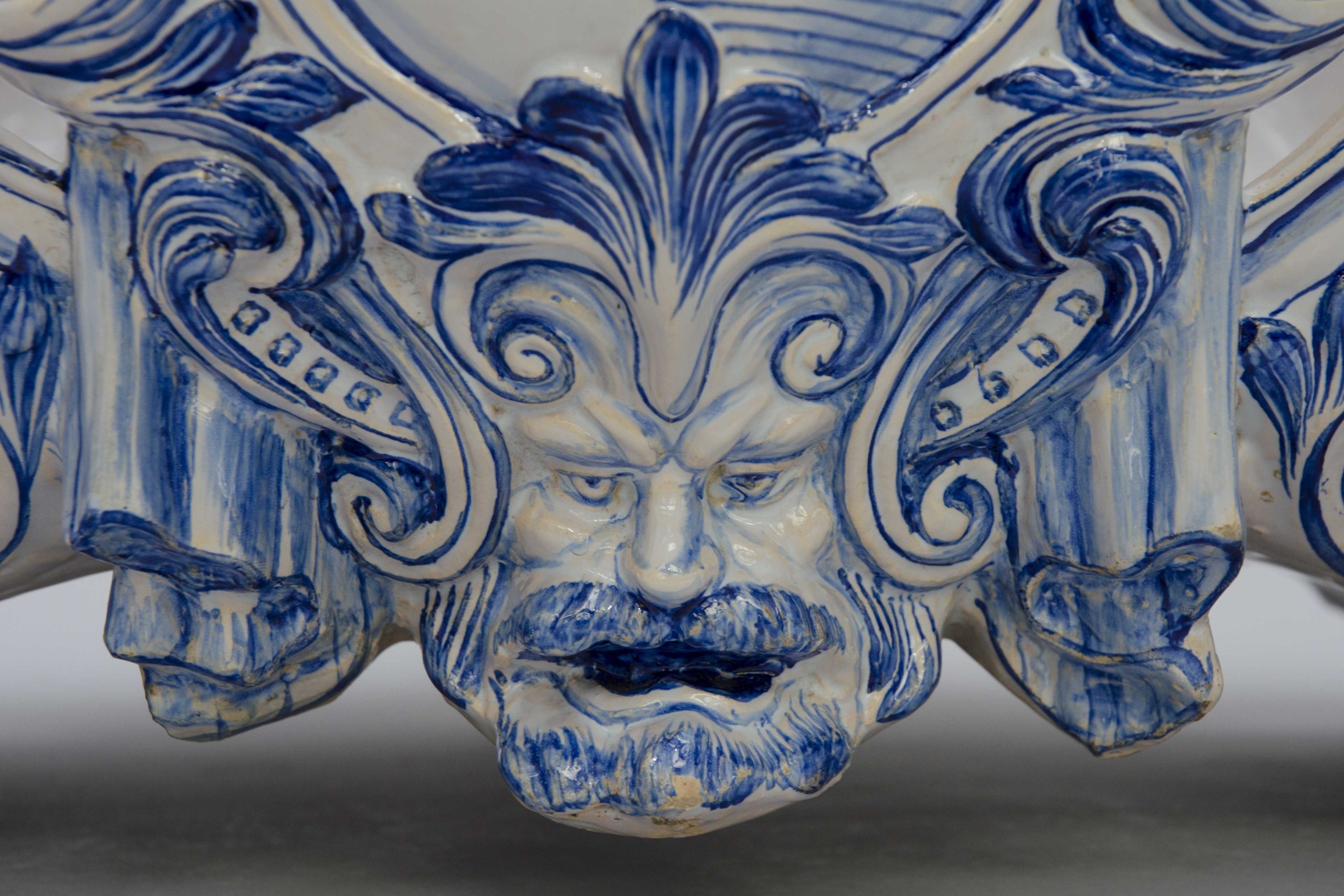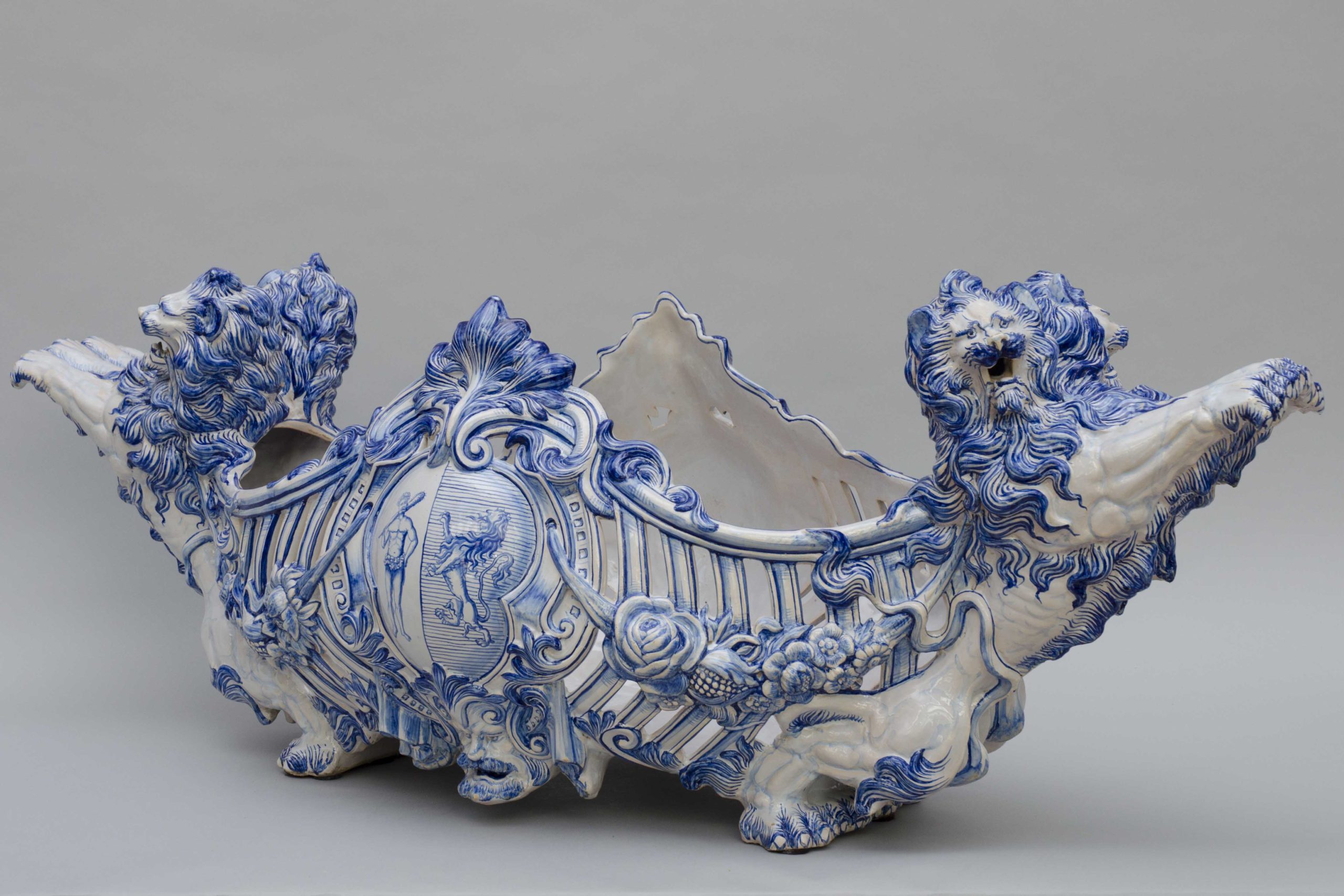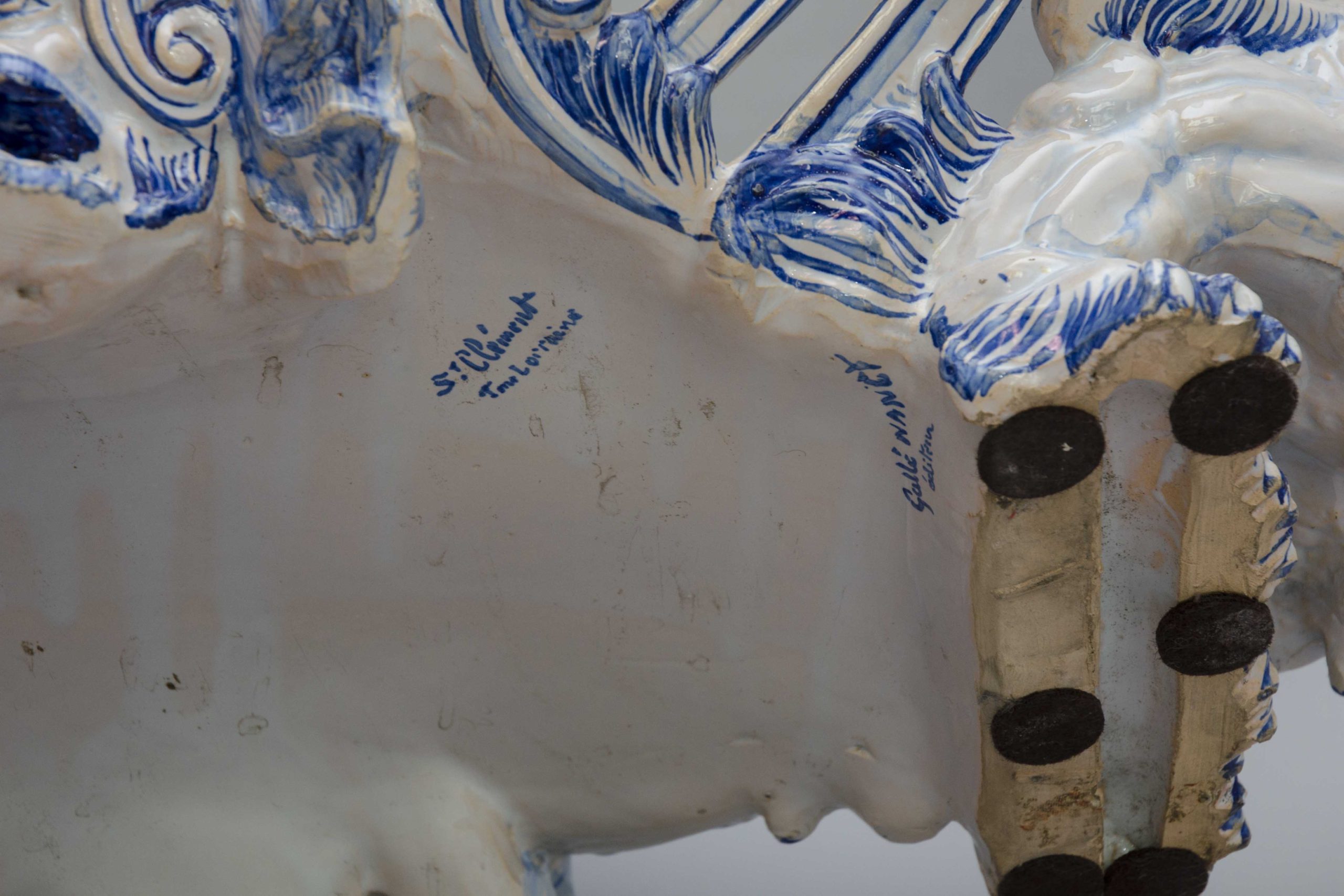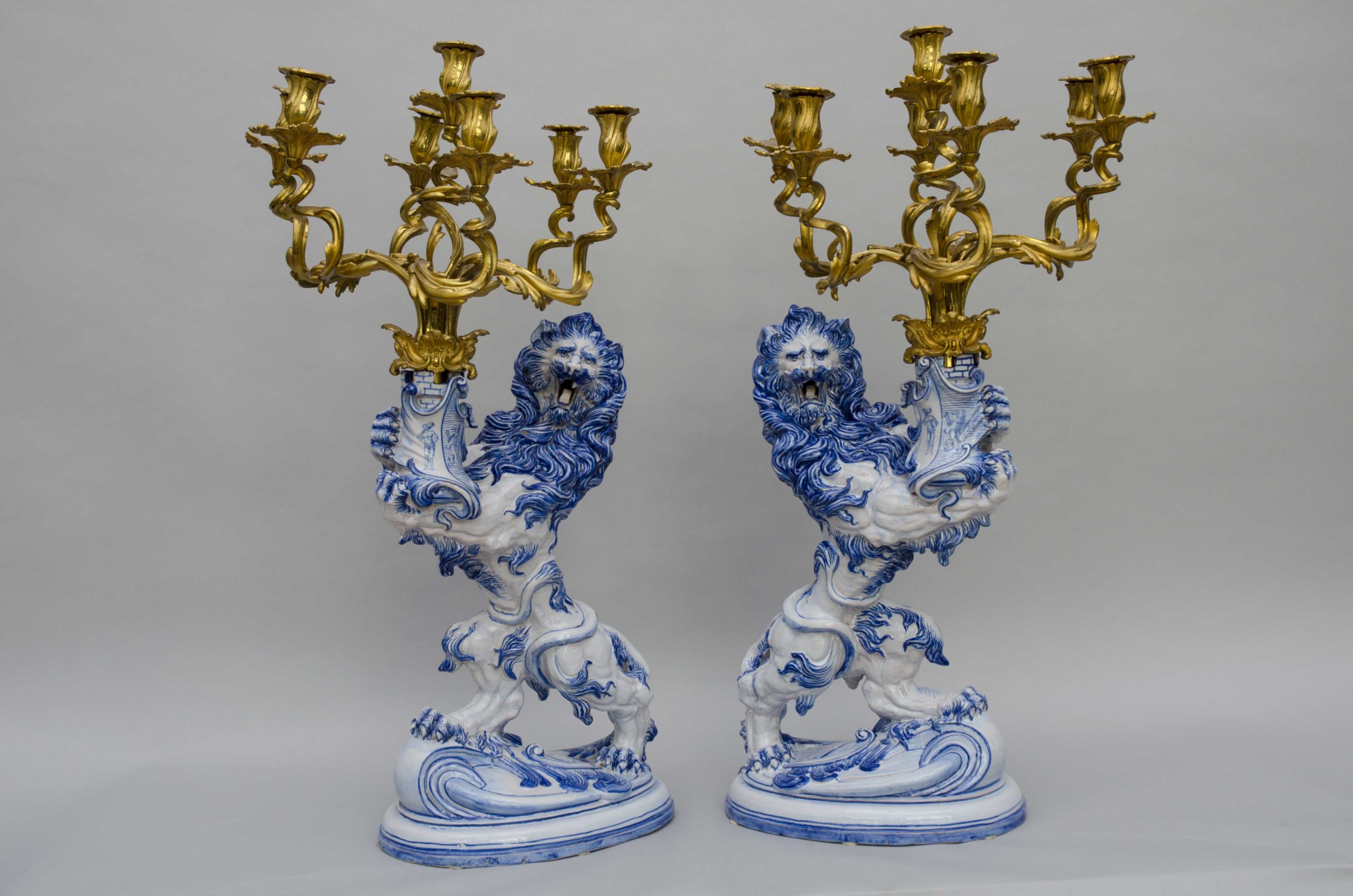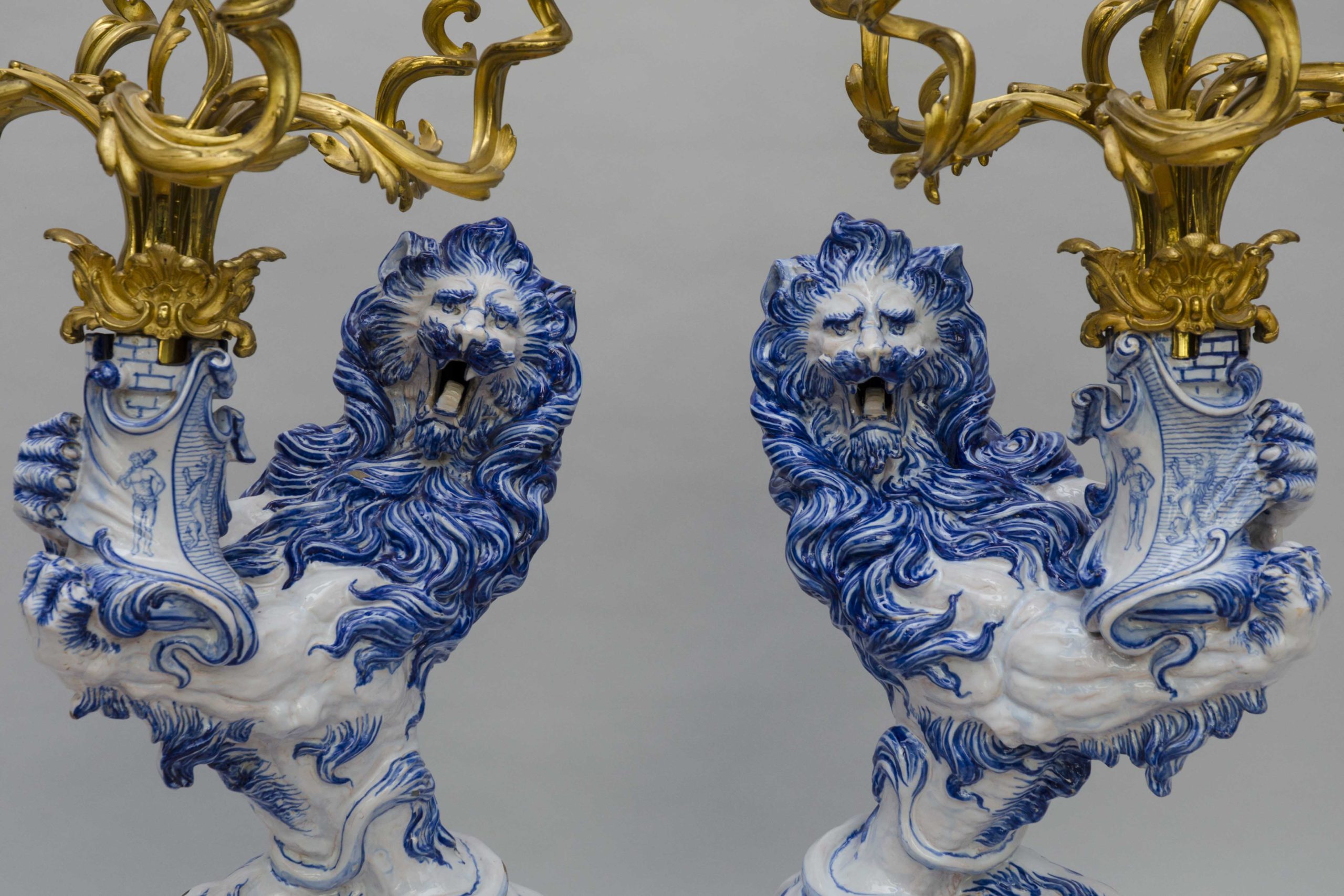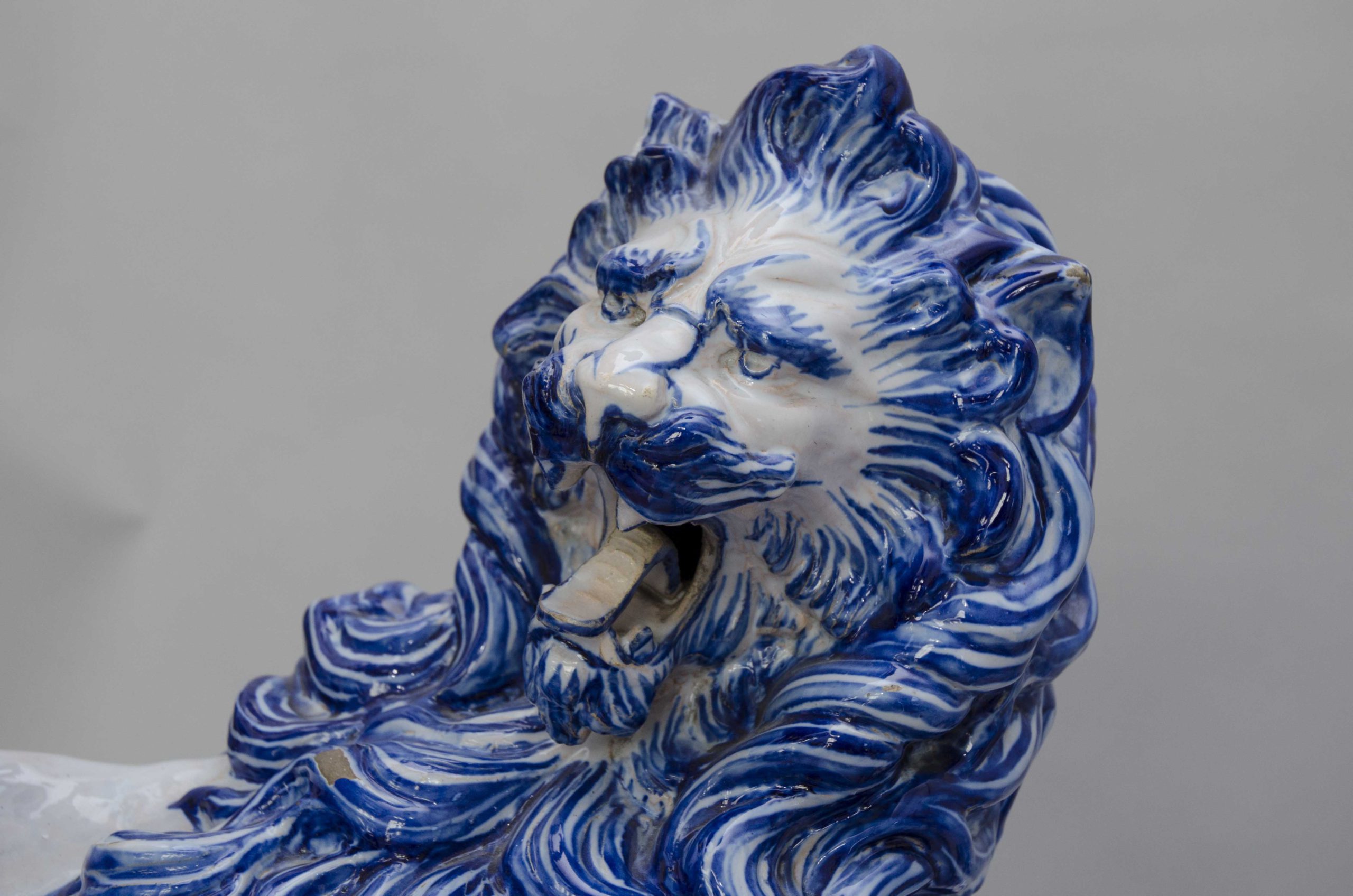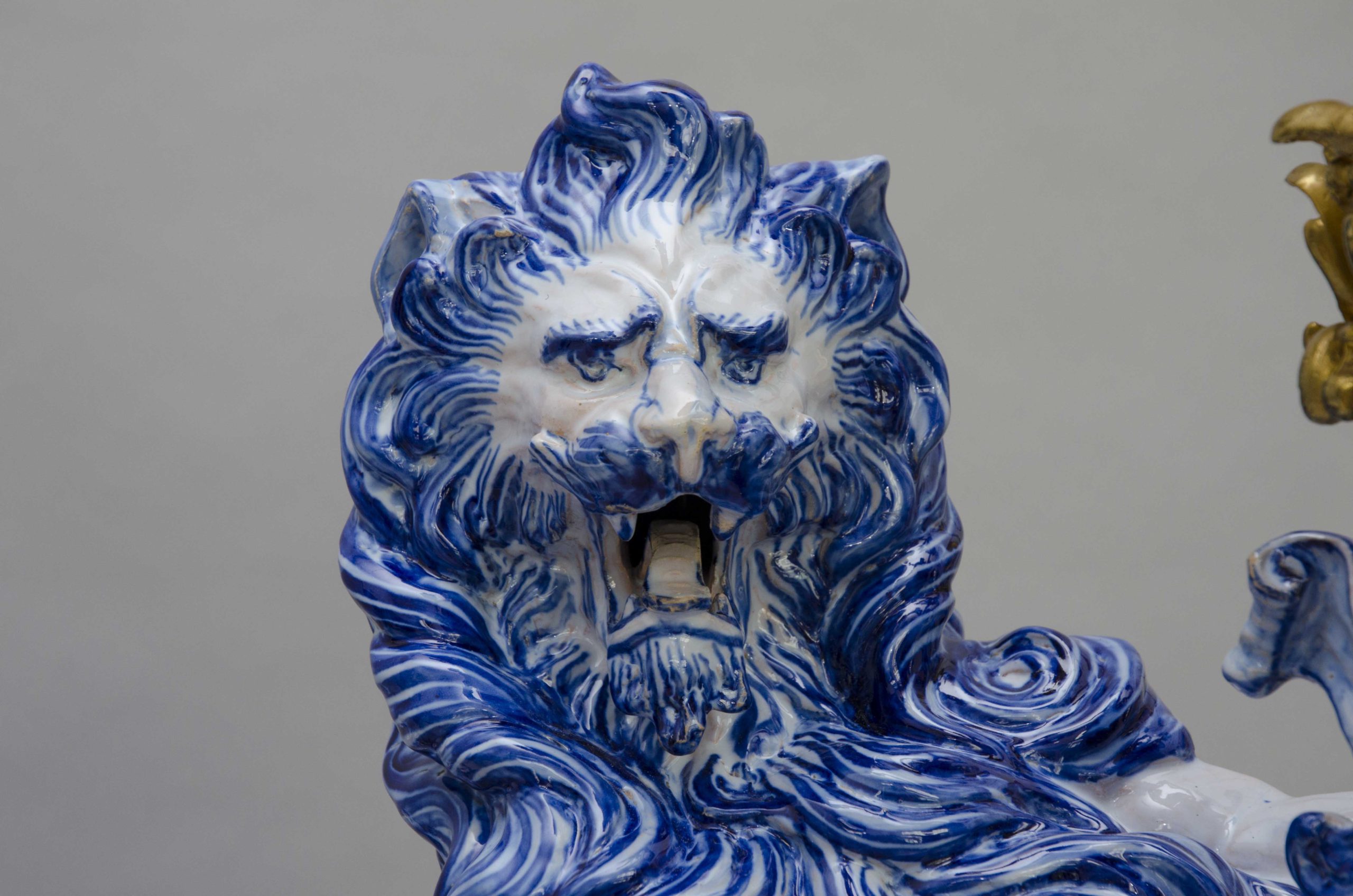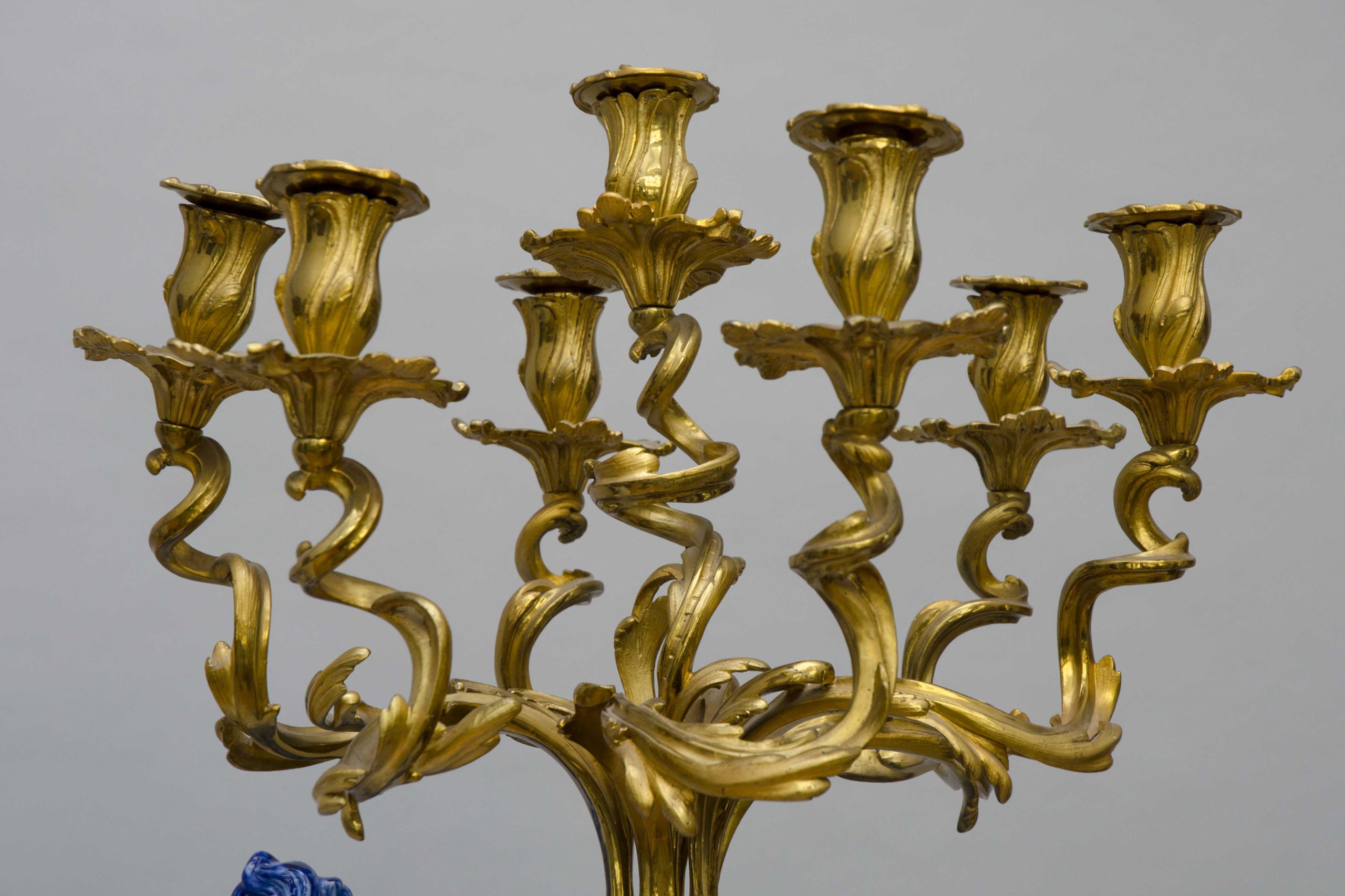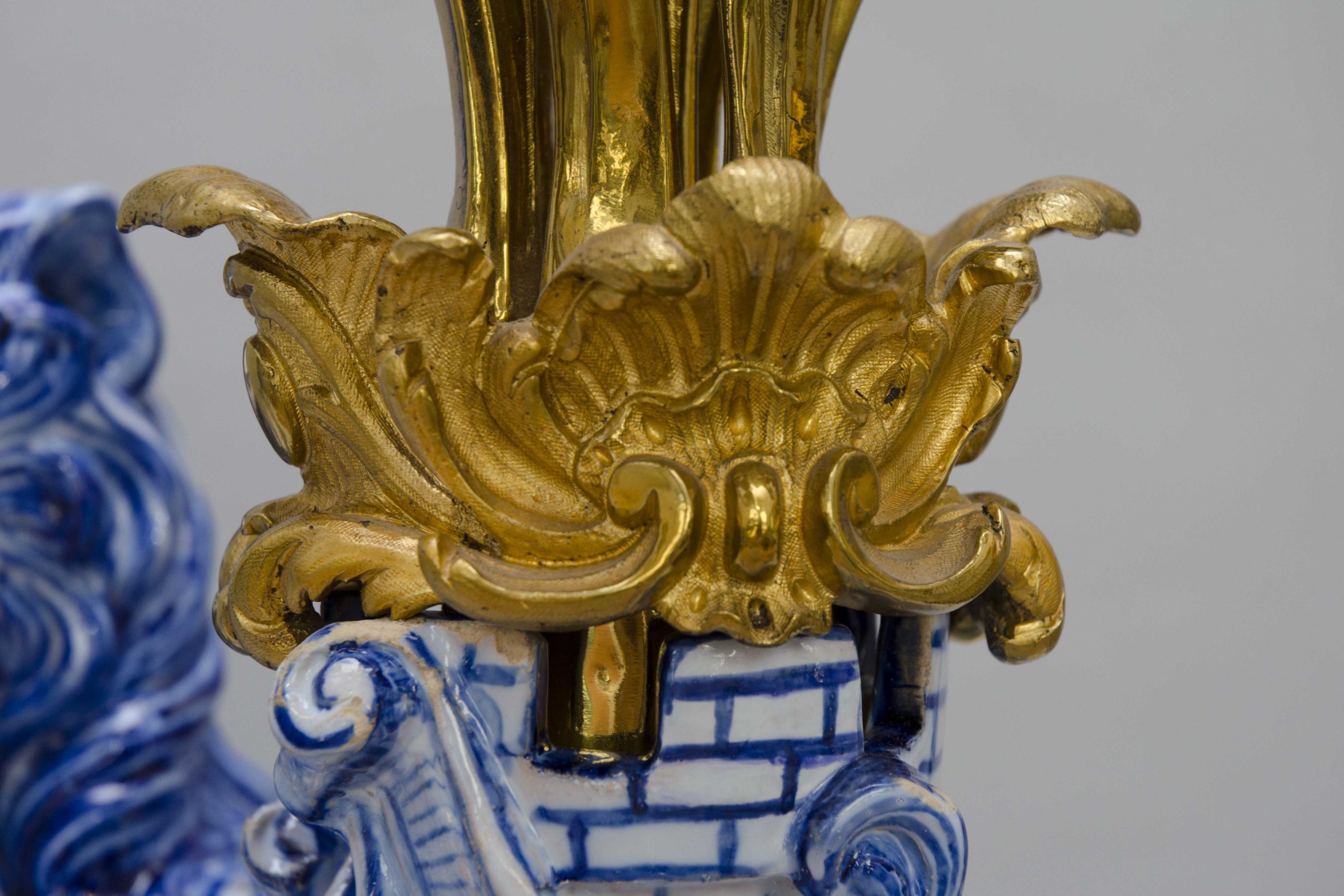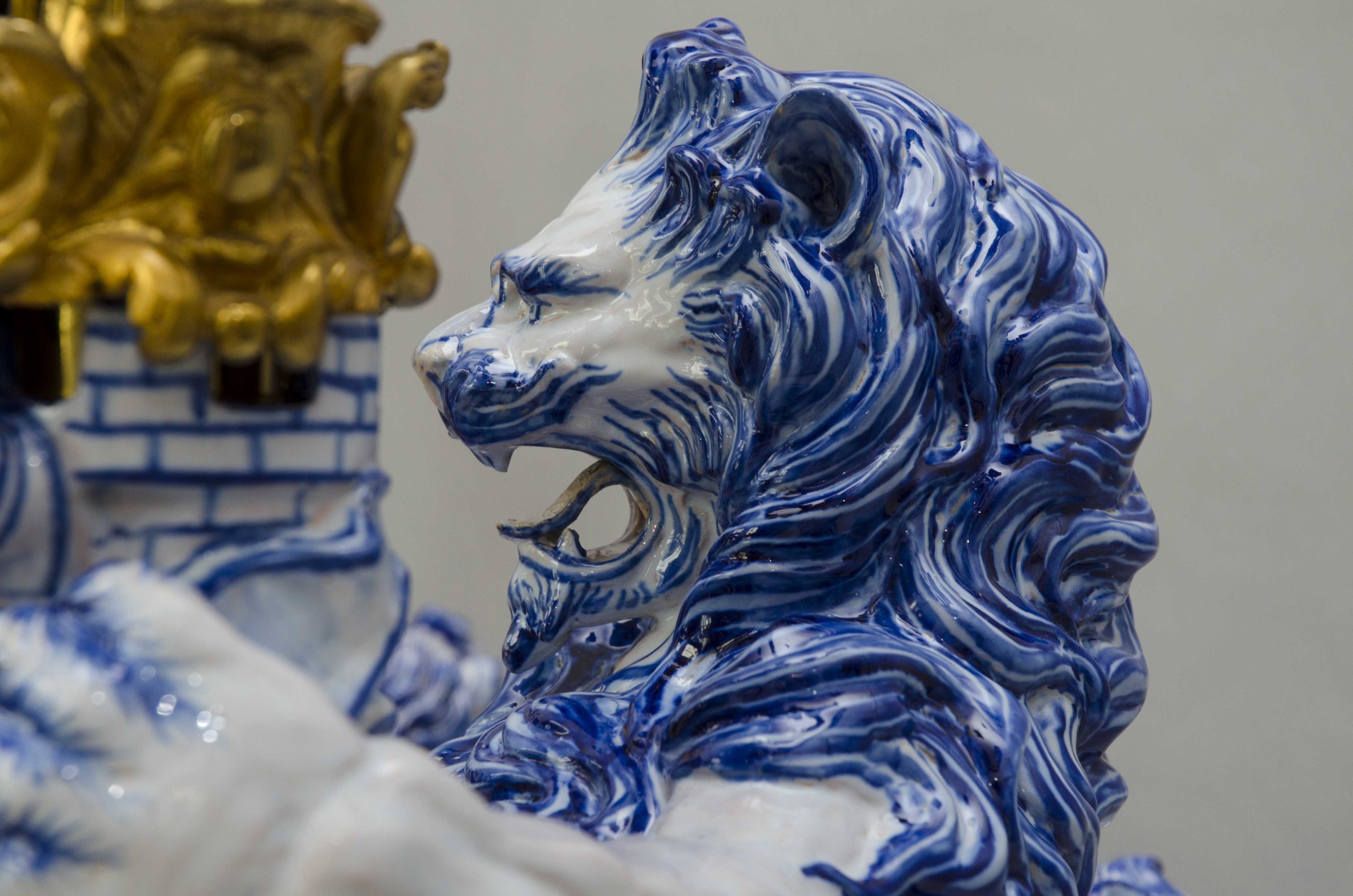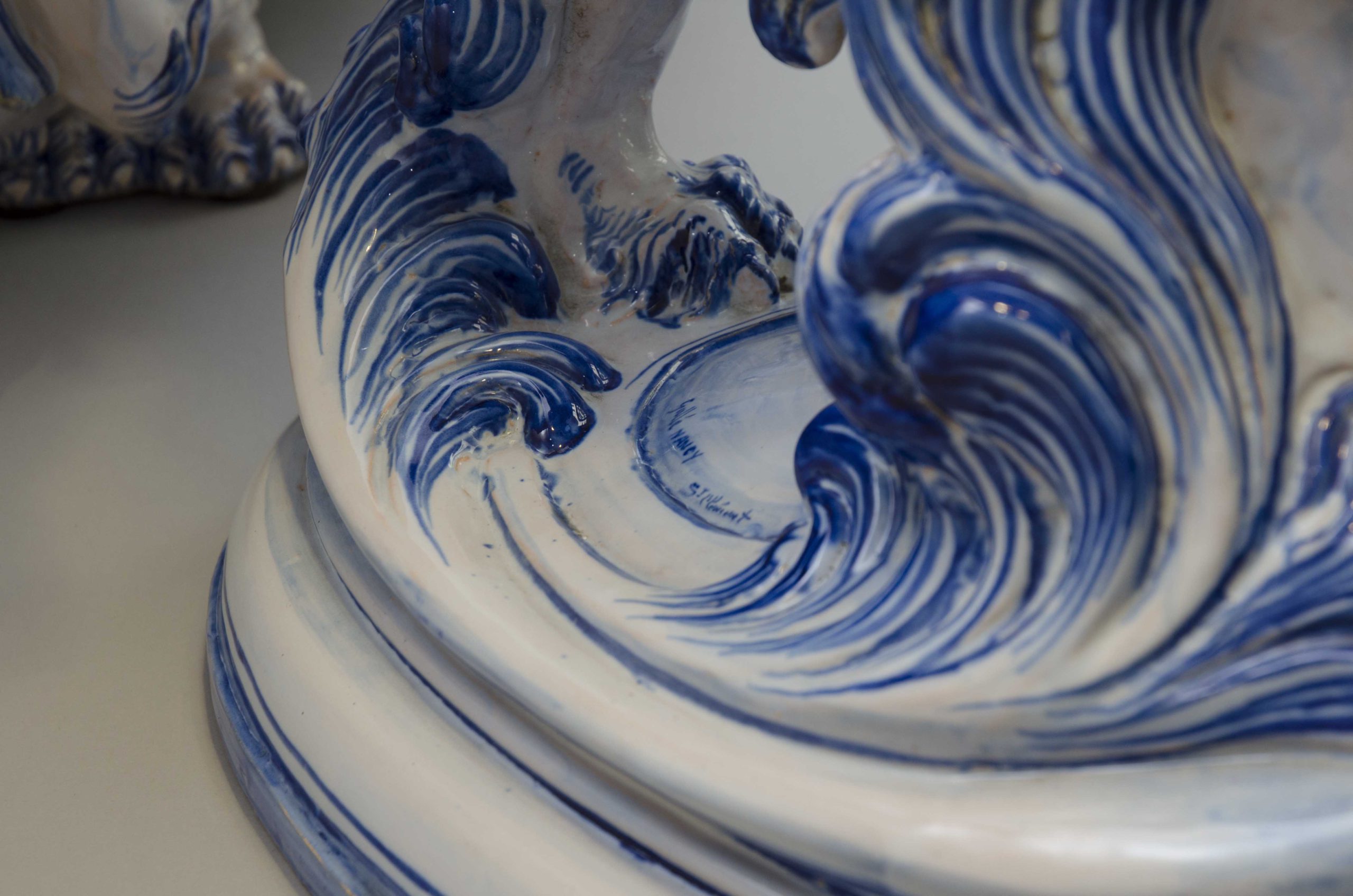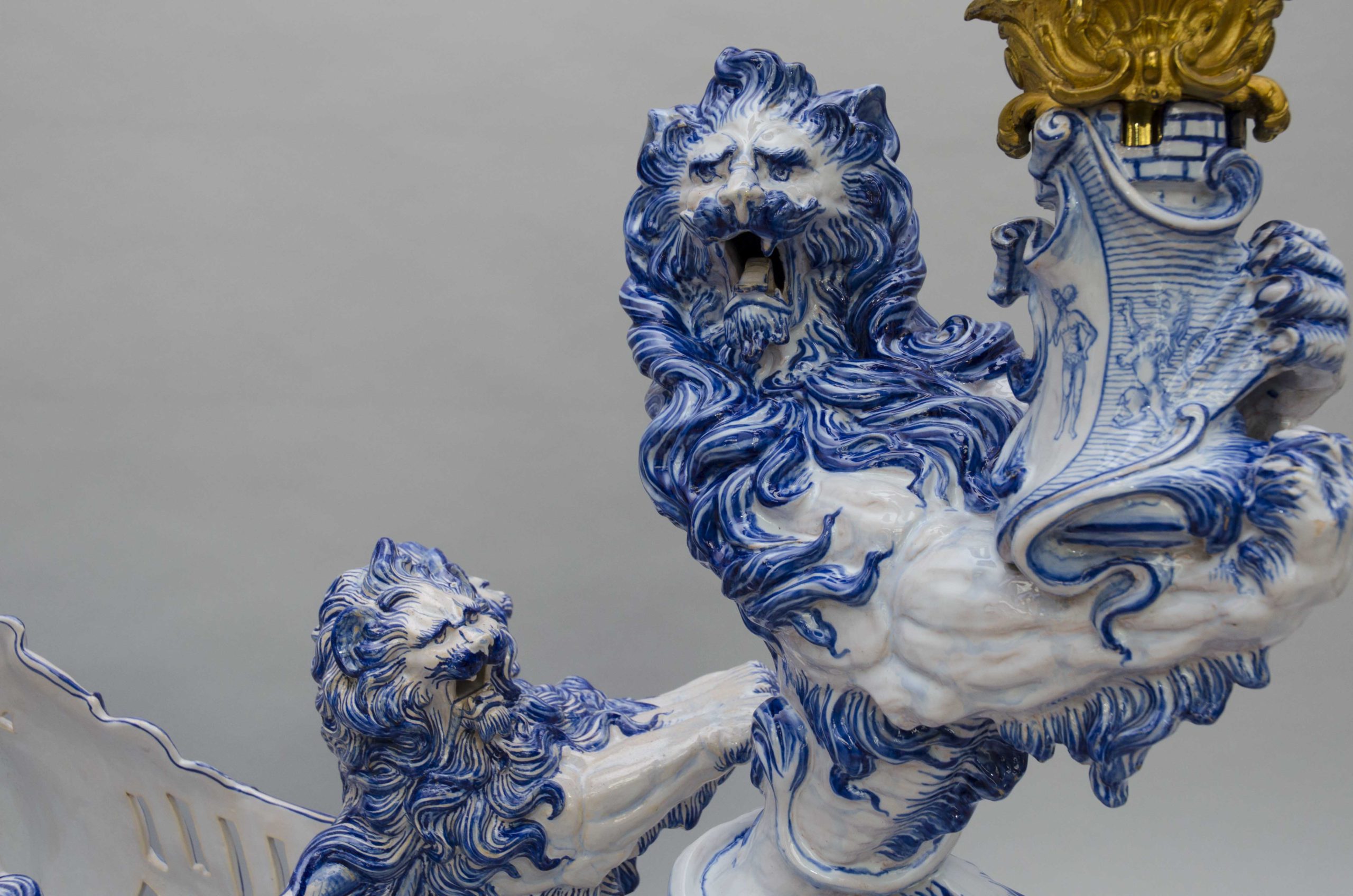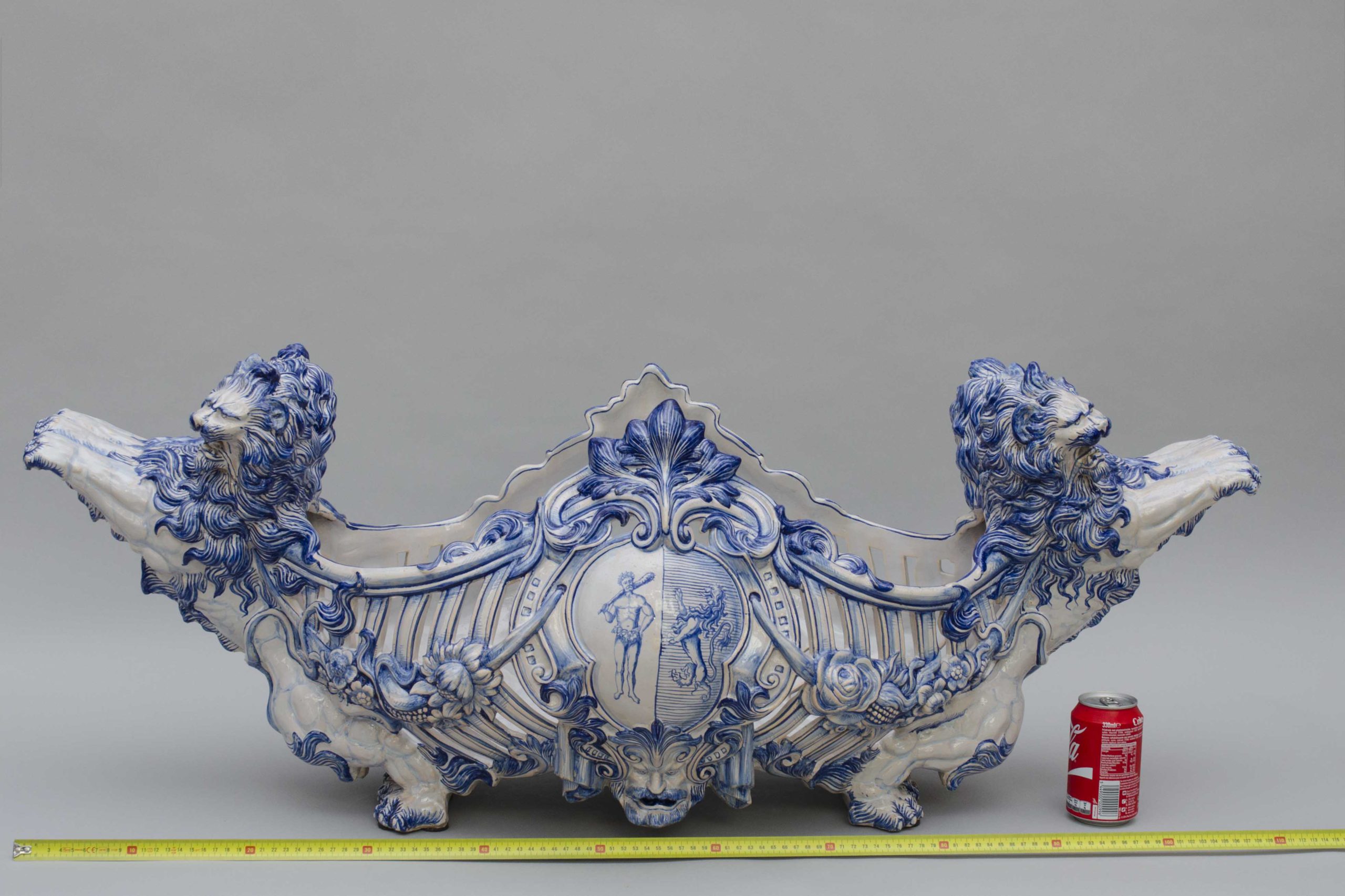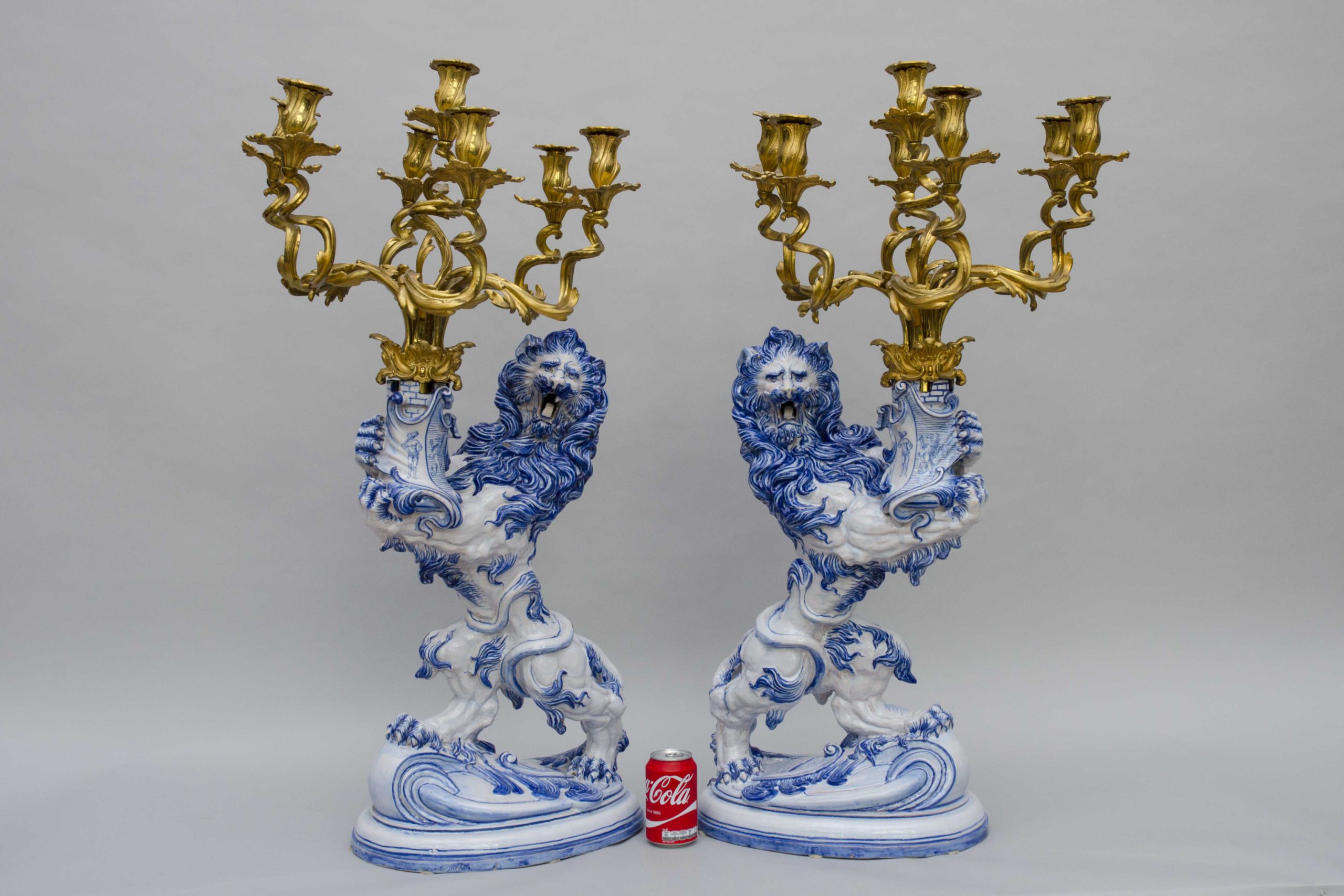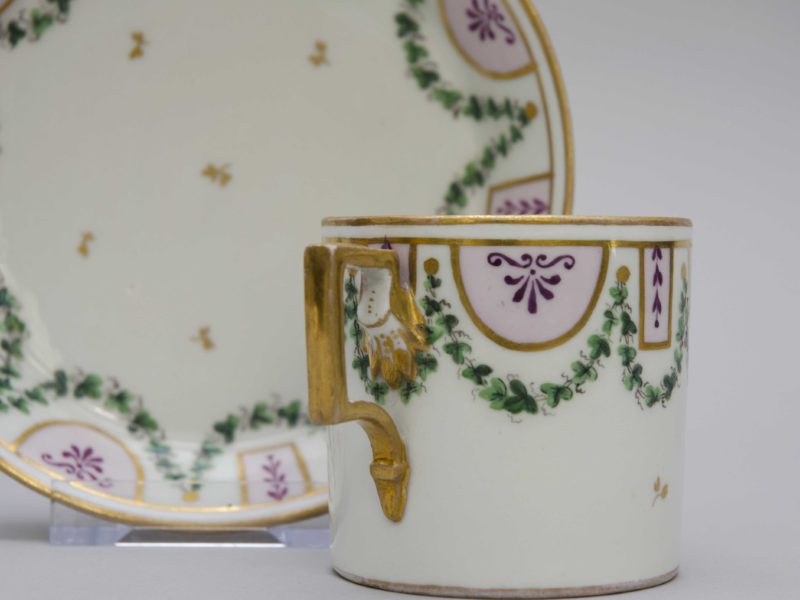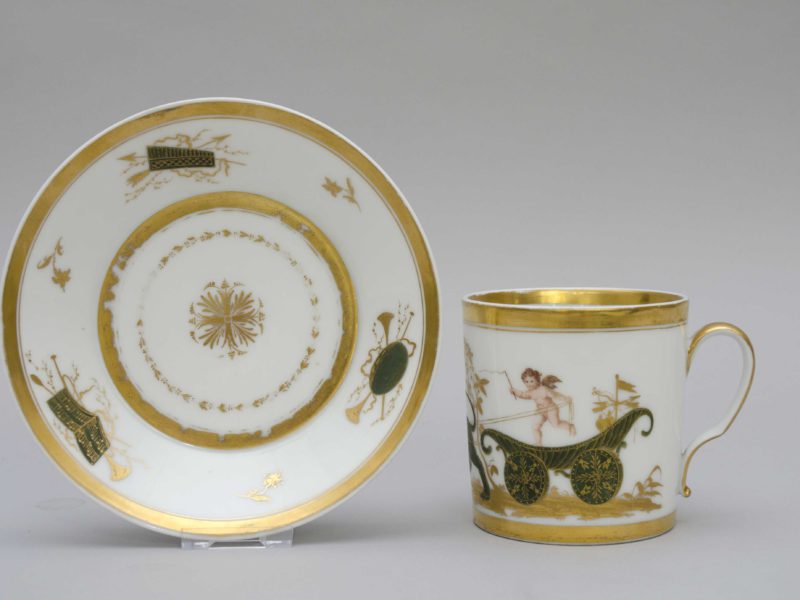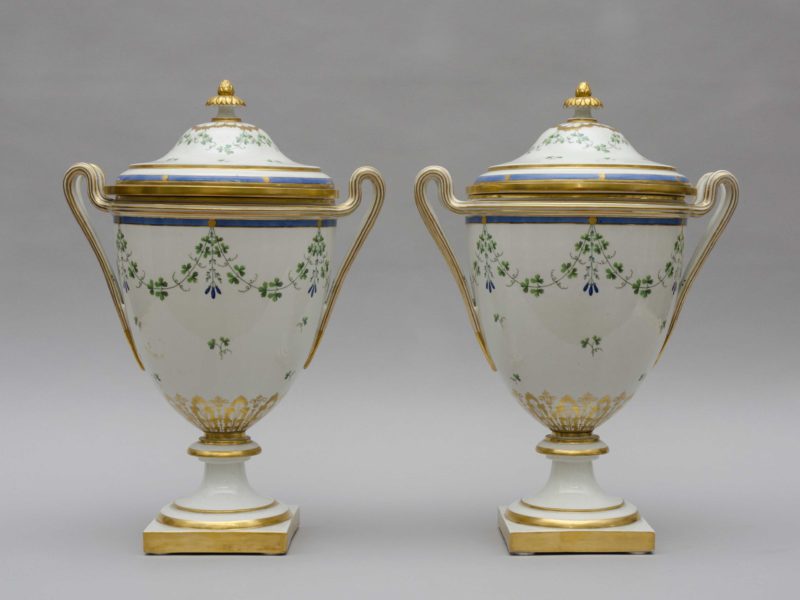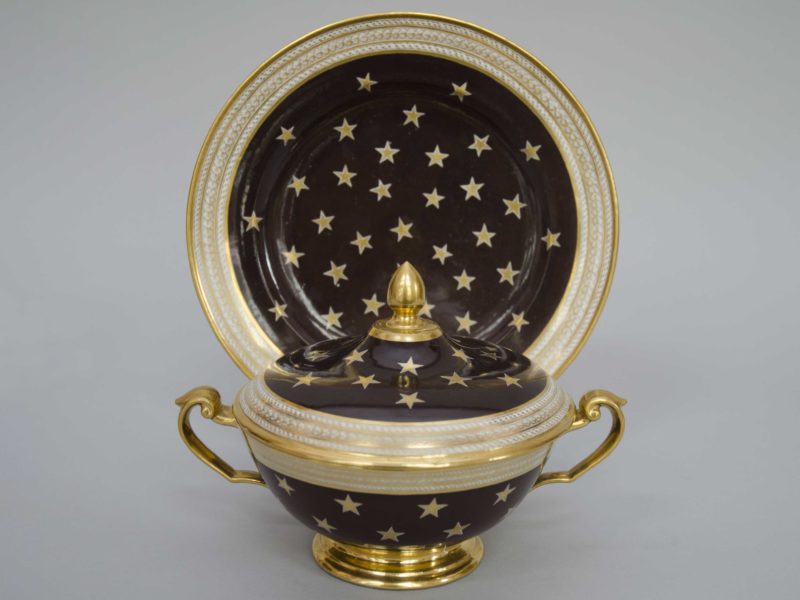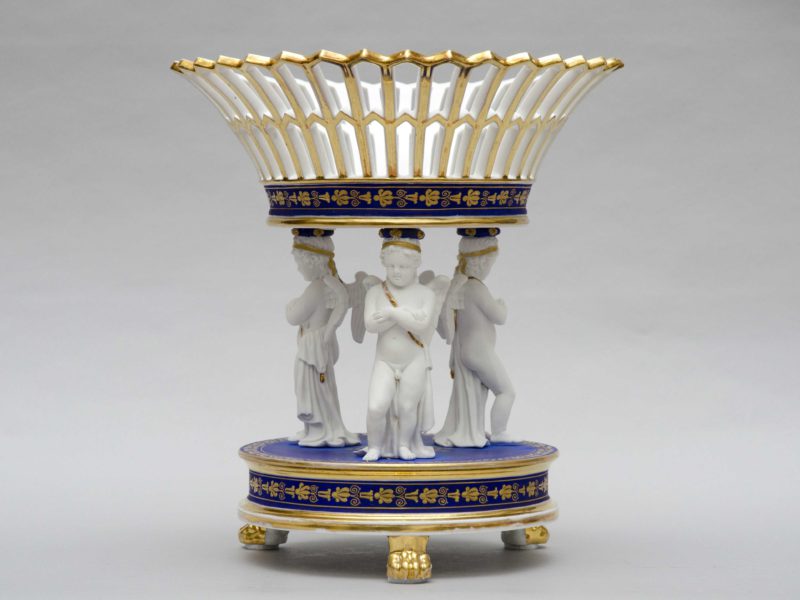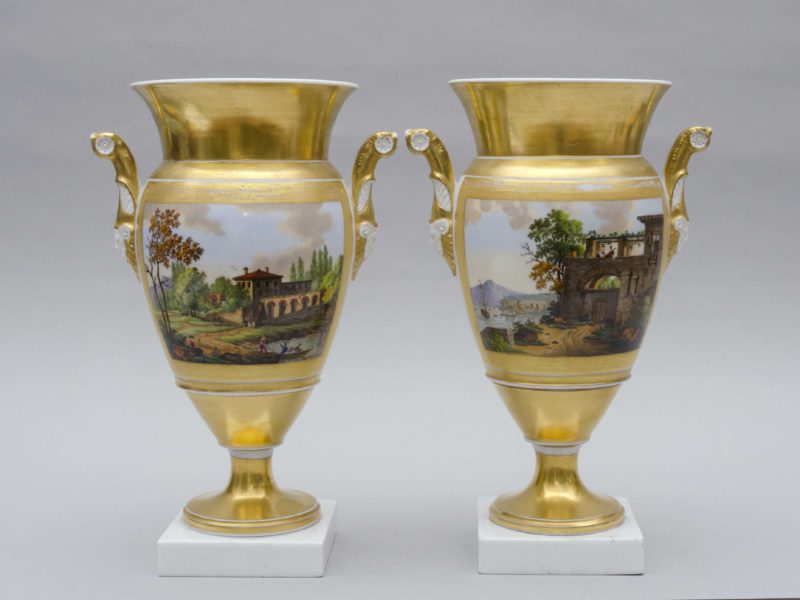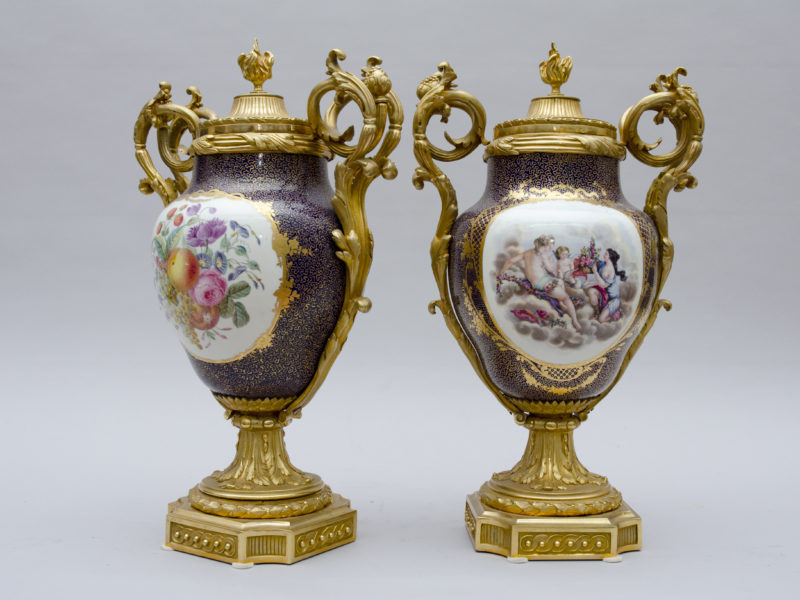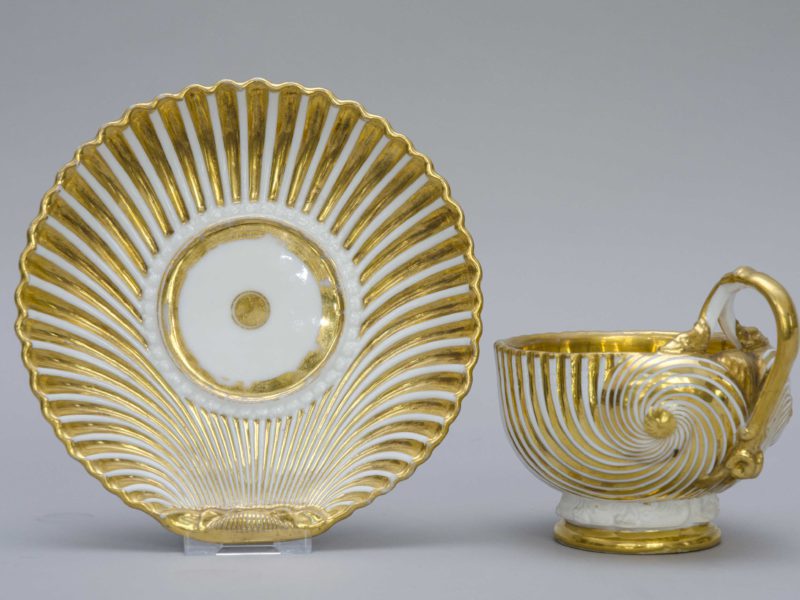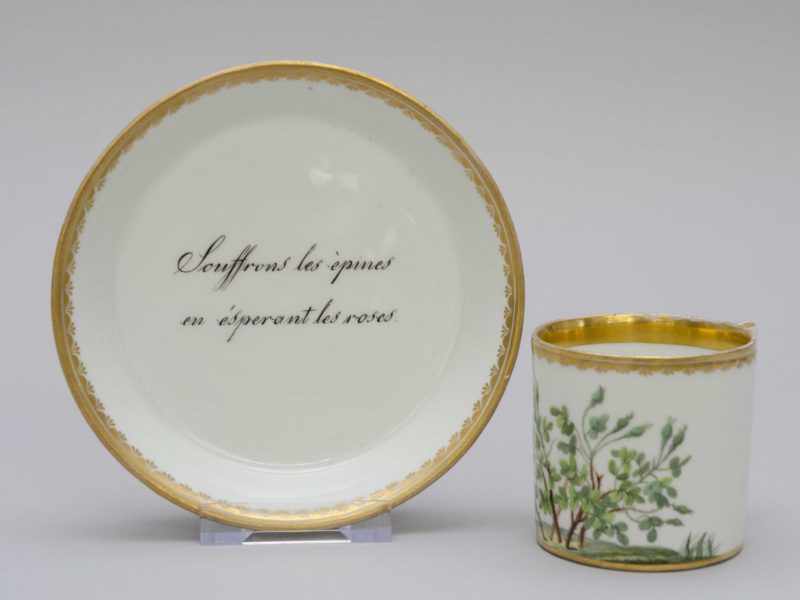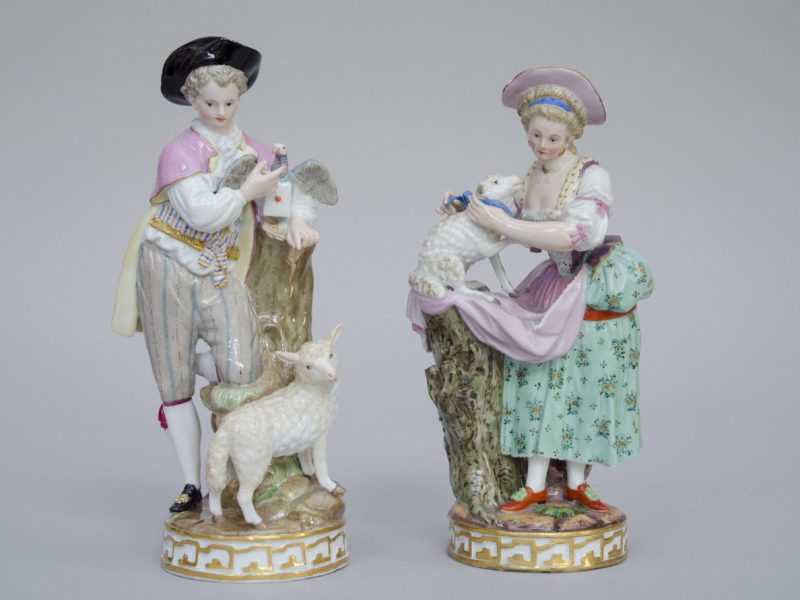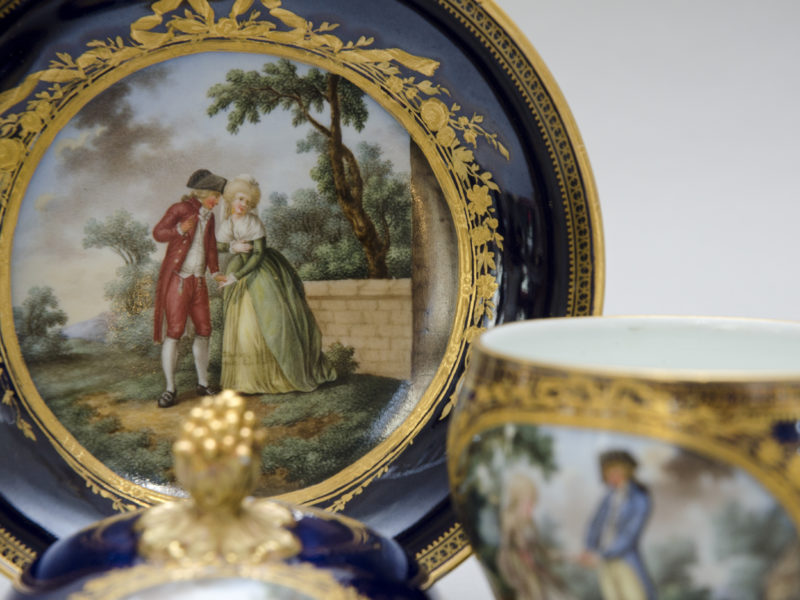
Momunetal mantel garniture, earthenware, Gallé Nancy
Out of stock
Exceptional three-piece earthenware set from Emile Gallé in St-Clément, decorated with the coat of arms of the (de) Sauvage family. Central basket with four lions forming the handles, the family coat of arms in the center and underneath, the mask of a bearded man. Large 7-branched candelabra in gilt bronze supported by a pair of lions on two legs, roaring and presenting medieval towers with the family crest.
signed in cursive “Gallé Nancy Editeur, St Clément Terre Lorraine” on the central basket, and “Gallé Nancy, Saint Clément” in blue under glaze on the bases of the lions.
Exceptional size for this work commissioned by the family for a castle, which has now disappeared.
Size: basket H 44cm – W 112cm – D 45cm
The candleholders are 98cm H 98cm (68cm without the bronzes) – base W 40cm x D 28cm
« Terre de Lorraine » , Gallé à Saint-Clément, Nancy, circa 1870-1876.
Émile Gallé (1846-1904) is one of the most outstanding figures of the applied arts of his time and one of the pioneers of Art Nouveau, founder of the École de Nancy in 1901.
Lit : In 1867, Charles Gallé, a porcelain painter who had taken over and developed his father-in-law’s business, opened his own glass engraving workshop in Nancy. He extended his activity to earthenware where he joined the Saint-Clément factory, of which he was the publisher, thus ensuring the ordering of pieces and their commercial distribution. Touching several technical fields within the same structure, he ensured the control of a market in full expansion. After having been for a long time a simple supplier of the famous Parisian store “L’Escalier de Cristal”, he is able to compete with it by having his own network of intermediaries and dealers. It will eventually expand its action on an international scale, being present at major exhibitions and receiving medals.
In 1858, Emile Gallé entered the Imperial High School of Nancy. He began to assist his father. Very gifted in drawing, he executed floral compositions, as well as mottos and emblems for the goblet and earthenware workshops. In 1864, he became a bachelor of arts and left for Weimar. His love for botany led him to take classes and then spent his leisure time discovering the flora of Lorraine, the Vosges and the Alps.
From 1862 to 1864, his father invited him to travel through Germany and England to “see and understand”. In 1864, he became a draughtsman in his father’s business and in order to familiarise himself with earthenware and glass work, he decided in 1866 to go to Meisenthal to work for Burgun, Schwerer & Cie in order to acquire practical experience in the trade and above all to learn glass chemistry.
In 1870, he joined his father in Saint Clément but quickly left for Paris where he tried to resist the Prussian invaders. Emile’s return was marked by the meeting with Victor Prouvé and then their collaboration. In 1871, he was in London to represent his father at the “Arts de France” exhibition. It was he who represented his father at the 1867 Universal Exhibition in Paris where he obtained an honourable mention for glassware and at the 1872 Universal and International Exhibition in Lyon where he was awarded a gold medal in class 33 (porcelain and crystals). In 1874, his father entrusted him with the management of his business. In Nancy, he groups together all the activities: earthenware, glassware, drawing, composition, decoration and engraving workshops. In 1876, he ceases all collaboration with Saint Clément.
In 1878, Gallé exhibited dinner services and various objects such as candy boxes and tobacco jars. The sources of inspiration are varied: Louis XV and Louis XVI style. Some pieces were declined with different decorations and in various sizes, due to the great success they had: this is the case for representations of cats that were on the market for about thirty years. But also for dinner services: Berger and Herbarium services which won a gold medal at the 1884 World Fair. In 1885, he extended his activities to cabinet making.
Gallé is devoted to the Universal Exhibition of Paris in 1889 with three awards for his ceramics, glassware and furniture (including a Grand Prix for his glassware), where he celebrates in particular the lost provinces of Alsace and Lorraine and thus develops, through his symbolic decorations, the theme of patriotism. On this occasion, Gallé was made an officer of the Legion of Honour.
After Emile Gallé’s death in 1904, his glass factory continued to produce until 1936. Each piece bears Gallé’s signature with hundreds of variations.
Out of stock
Contact us